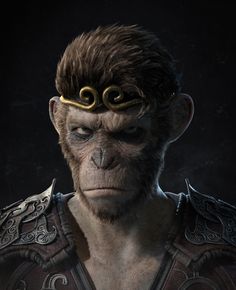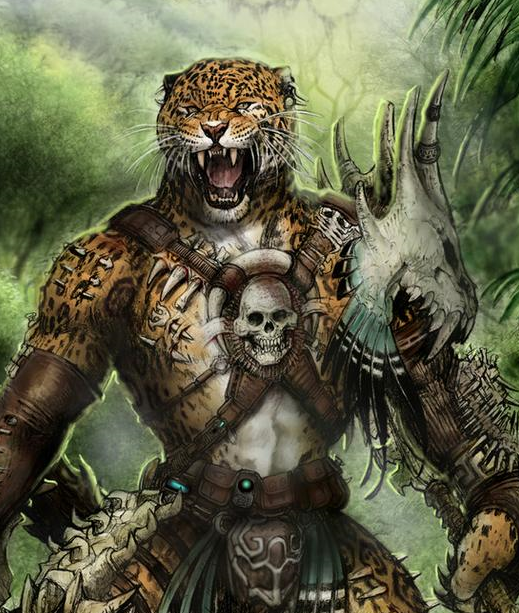Mutant Animal
Dogboys were the only mutant animal represented in the core rules of Savage Rifts. Mutant Bats and Rats, Battlecats and Kill Cats were included in the Empires of Humanity book. Were-Jaguars, Capybara, Tigermen, Mini Monkeys and more can be found in other Palladium Worldbooks. Red Queens, Shekru and Tamarins are all home brewed. "Teenage Mutant Ninja Turtles and Other Strangeness", and "After the Bomb" are two other Palladium sources for creating just about any mutant animal the player can imagine.
In the late 1950s, more than two hundred years before the Great Cataclysm, a Russian geneticist named Dmitry Belyaev attempted to create a tame fox population at the USSR Academy of Sciences, Novosibirsk. After the fall of the Soviet Union, the program was able to just barely survive by selling off some of the domesticated foxes to wealthy patrons who desired unique pets; but even this was not able to keep the lights on for long. Some time in the middle of the 21st century a wealthy Japanese investment group stepped in to fund the program, but they wanted to shift the program's emphasis beyone selective breeding and into actual genetic manipulation. This investment group's ultimate goal was to create humanoid foxes to be companions for ultra-wealthy businessmen.
By the second decade of the 22nd century, the Kitsune project proved successful beyond their wildest dreams. Several hundred were produced, shocking the world with the ethical implications of foxes with human-like bodies and even human-level intelligence, which was an emergent side-effect of the mutation. The project was shut down with prejudice, but not before the scientific details had been the center of great discussion around the world.
Both India and Brazil continued to conduct similar genetic experiments in animals as part of their fledgling space programs. They conducted most of their experiments in orbit because of the apparent advantages of weightlessness and to protect them from the ethical issues raging on the planet below. These experiments concentrated mostly upon creating smaller and more dextrous mutants. All communication with orbiting satellites was lost after the Great Cataclysm, and those facilities have been forgotten and most likely became part of the scintillayer.
After the Great Cataclysm, the concept of creating intelligent animals to fight for man returned to prominence. Gone were the ethical restrictions of society and government. The very survival of the human race demanded all possible options to be considered. So, the US Military dusted off the vixen experiment and devoted several floors to the production of humanoid dogs in its Lone Star Complex. It was one of the few surviving fortifications in America and was the center of research into all things that could save humanity. Then something happened. No one recorded the event or lived to tell about it. The entire facility was abandoned and forgotten and the cause remains a complete mystery. There is one man with a theory, however. That man is Doctor Desmond Bradford.
A Coalition scientist, Dr. Desmond Bradford led the team that explored and brought the Lone Star Complex back to life 250 years after it went dark. He discovered a ninth sub-level that was not on any facility maps and was fortified behind great blast doors. But that is a story for another day. It was on the floors above where the genetic research was conducted and the experiments and all the notes, including the original Kitsune Project papers, were just sitting there waiting for someone to pick up where the U.S. Military left off. Dr. Bradford did just that and the Dog Boy was born. The Coalition States have nearly perfected dog boys and have been experimenting on other animals as well, including monkeys, bears, bats, rats, cats and, of course, foxes. There are rumors of more animal candidates and that even more bizarre experiments are being conducted on the 8th floor, but only a select few scientists and guards have access to that level.
Basic Information
Anatomy
Of utmost concern to the success of mutant animal programs are two things: Dextrous hands capable of operating weapons and tools, and the mental capacity to understand and follow orders.
All other features of the mutant animals vary as to how anthropomorphic they become. Some species have little diversity in anthropomorphism. These are the ones that have been mostly perfected over the years. Among these are Dog Boys, Ursa warriors, Battle Cats, Rats and Bats. Other species may exhibit more natural animalistic features more frequently.
Some other odd traits of mutant animals relates to differences between the animal and anatomical features.
- Most mutant animals retain their animalistic claws, for example (or hoof-like nails, as the case may be), and padded palms despite the human-like shape of their hands and feet.
- Another odd combinations of traits is that most mutant animals retain their fur over their entire bodies yet human like hair can often be found growing on their heads and male mutant animals may even be capable growing beards.
- Most mutant animals retain multiple nipples. Despite this, mutant animals have inherited the human's single pair of mammary glands, resulting on only two breasts, regardless of how many nipples they may have.
- Many origin animals do not have sweat glands, yet most mutant animals do. This has the unfortunate side effect of making them as susceptible to dehydration in hot environs as humans, perhaps more so because of the increased amount water their fur can hold before it evaporates. (luckily for those around them, they did not inheret the odor-inducing apocrine sweat glands found in human underarms!)
Genetics and Reproduction
Most mutant animals are capable of reproduction, but only with others of their kind. They do not produce offspring with either their fully human nor fully animal progenetors.
Growth Rate & Stages
Mutant animals mature much faster than humans, but not as fast as their pure animal counterparts. A mutant animal can be considered physically mature in about three years and mentally mature in about five to seven years.
This accelerated development is one of the reasons mutant animals have been so successful in the defense of earth and why the Coalition States relies so heavily upon them.
Dietary Needs and Habits
Nearly all mutant animals take on omnivorous tastes as part of their mutation, although they also retain much of their animalistic preferences.
Additional Information
Perception and Sensory Capabilities
Most mutant animals retain some degree of heightened senses particular to their original species.
Some of the mutant animal projects of the Lone Star Complex:
- Dog Boy - fiercely loyal. many different breeds
- Red Queens - mental dominators. project abandoned.
- Ursa Warrior - simple but strong
- Battle Cats - a bit too unruly
- Mutant Rats - escaped the coalition, criminal tendencies
- Bat Boys - very successful, but natural abilities are no match for magic or technology. Among the only Coalition assets that can fly through bullarum.
- Tigermen - bloodthirsty apex soldiers
- Mini Monkeys - mainly used as spies
- Shekru (Malabar giant squirrel) - mechanics and operators with small dextrous hands
(image is of animal, not mutant)
- Were-Jaguar - An unstable mutation that becomes more animalistic with stronger emotion.
- Capybara Cousin (primo capivara) - first employed in marine assaults, but prey instincts too ingrained. natural calm in stressful situations led to employment in more support and medical roles.
- Golden-Lion Tamarin Cousin (primo leão dourado mico) - aggressive little fighters, hard to control















Comments
Author's Notes
I've intentionally left the prospect of a de-orbiting space station and/or a successful re-entry from orbit as a way of introducing some mutant animals into the game for player characters or as NPC. This gives another option besides escaped lab animal from Lone Star or defected coalition soldier.